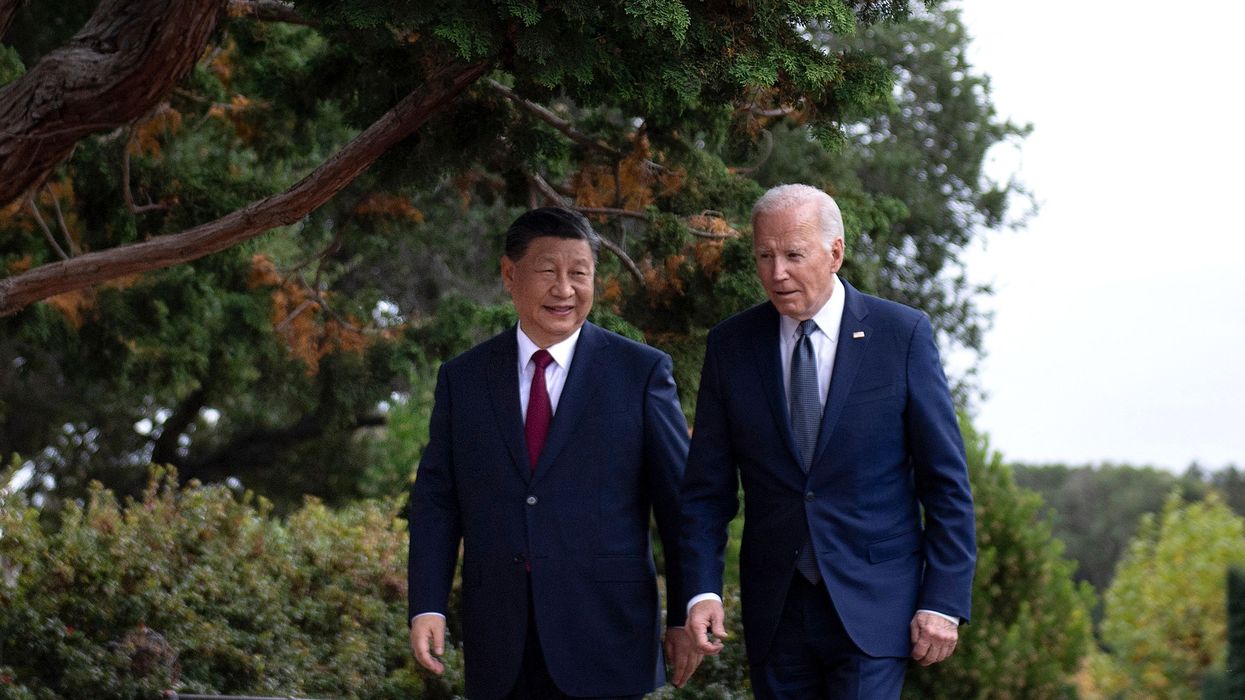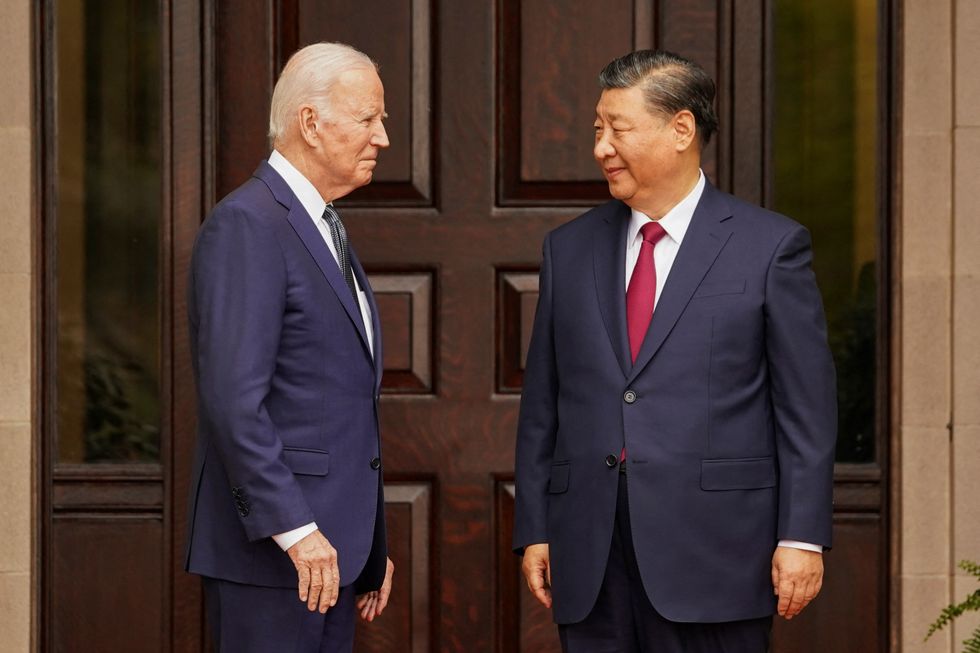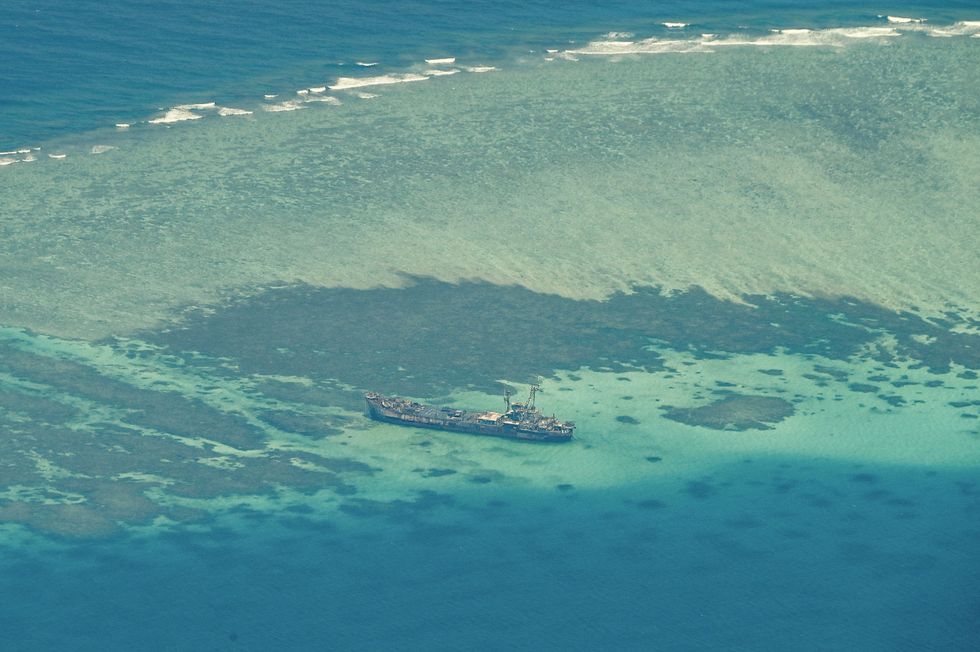China set to 'escalate' tensions as Joe Biden fails to leverage key strategic advantage

Joe Biden has been warned he is failing to make use of the US' advantage over Beijing
|Getty

The Biden administration have been called out for not doing enough to curtail China’s belligerent behaviour
Don't Miss
Most Read
The US needs to take a firmer stance against Chinese hostile behaviour, or Beijing will “escalate” tensions further, a maritime expert has warned.
Brent Sadler stated that the Biden administration were not doing enough to curtail China’s belligerent conduct towards Taiwan.
Biden met with Xi Jinping last week at a summit in San Francisco in a public show of improved communication between the two countries, however Sadler warned that the US needed to be doing more.
Sadler said that the US should respond more “aggressively” to China when they act belligerently.
WATCH NOW: James Cleverly visits China in an attempt to repair damaged ties
He said that the US has substantial “leverage” to weigh against China that could halt their hostile actions, however they are not using it appropriately.
Sadler, who served in the forces for 26 years, also suggested that the US Navy should expand its presence in the Pacific in order to monitor Chinese military developments.
He told the Daily Express: “The US has lots of leverage today that it is not taking advantage of.
“One, the rallying of regional partners and allies to a more forceful push-back to Chinese belligerence and aggressiveness – think Philippines around Second Thomas Shoal, Australia with AUKUS, Japan increasing defence spending over two percent in the coming years.
CHINA LATEST:

Sadler also suggested that the US Navy should expand its presence in the Pacific in order to monitor Chinese military developments
|Reuters
“The US also has a military capability and sustaining a robust military (specifically two aircraft carriers strike groups) nearly persistently in the Western Pacific for the past two years needs to be guarded and sustained at a minimum.
“But the Army needs to up its deployment patterns to the region through a more robust Pacific Pathways deployment program.”
The US has offered support to the Philippines, who are in a dispute with China regarding territory, and also cautioned Jinping about his aspirations to annex Taiwan, telling him to give up.
Beijing has recently clashed with Manila over control of the Second Thomas Shoal, a submerged reef in the South China Sea which has been claimed by many countries – including China, Taiwan and Vietnam.

Many countries have claimed ownership of the Second Thomas Shoal, a submerged reef in the South China Sea
|Getty

Sadler said that the US has substantial “leverage” to weigh against China
|Reuters
Fears are also mounting that China will launch an invasion of Taiwan, especially as Beijing is increasingly expanding and modernising its military.
When asked how the US should respond to the China’s hostile actions to Asian regions, Sadler said: “The US is well behind the curve on the military pacing rhetoric, the Chinese PLA is beyond the US in capacity both in numbers of units, firepower and industrial might.
“However, this is checked in two parts by some niche capabilities the US has and the increasing defense spending of regional allies like Japan, Taiwan and Australia to blunt the Chinese advantage – but this is fleeting.
“In the near-term the US military is needed to be present in the South and East China Seas persistently and ready to respond aggressively and locally to any Chinese provocation – there needs to be cost or else these will continue and escalate.”










